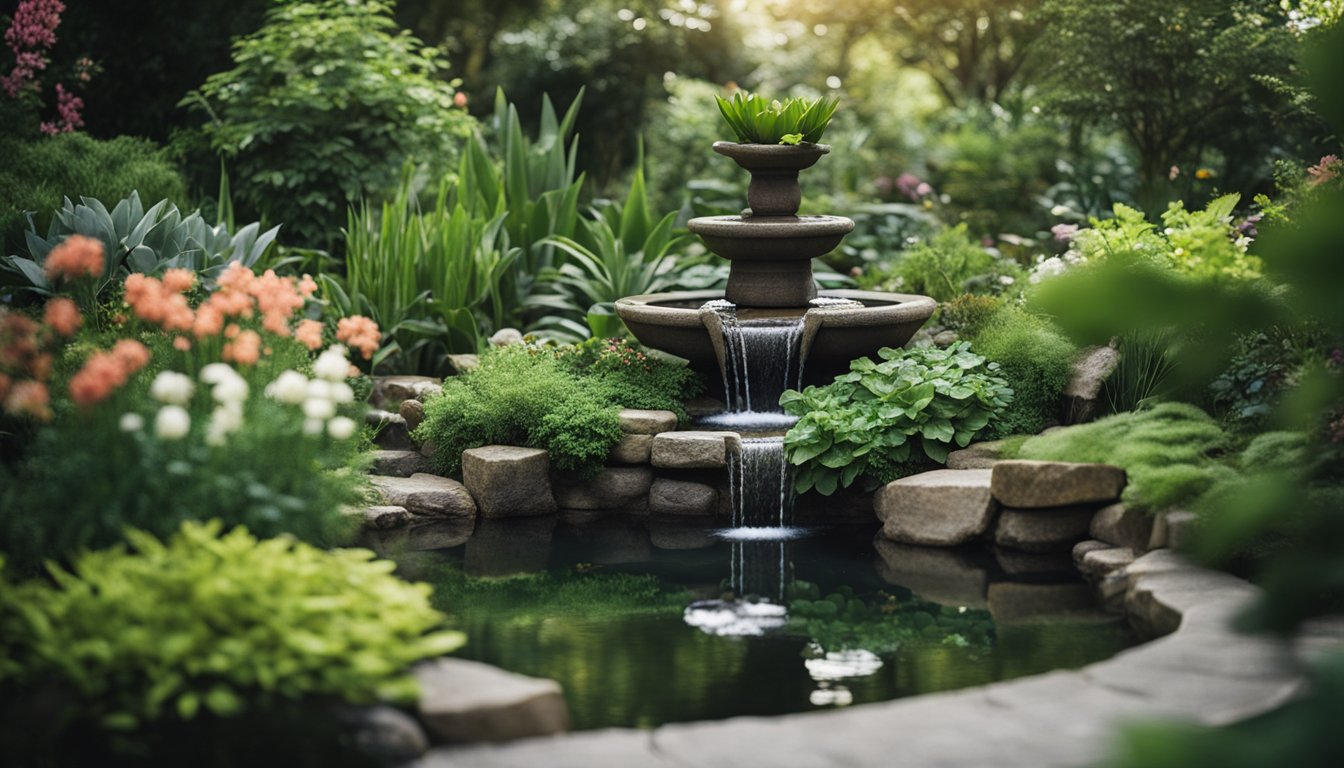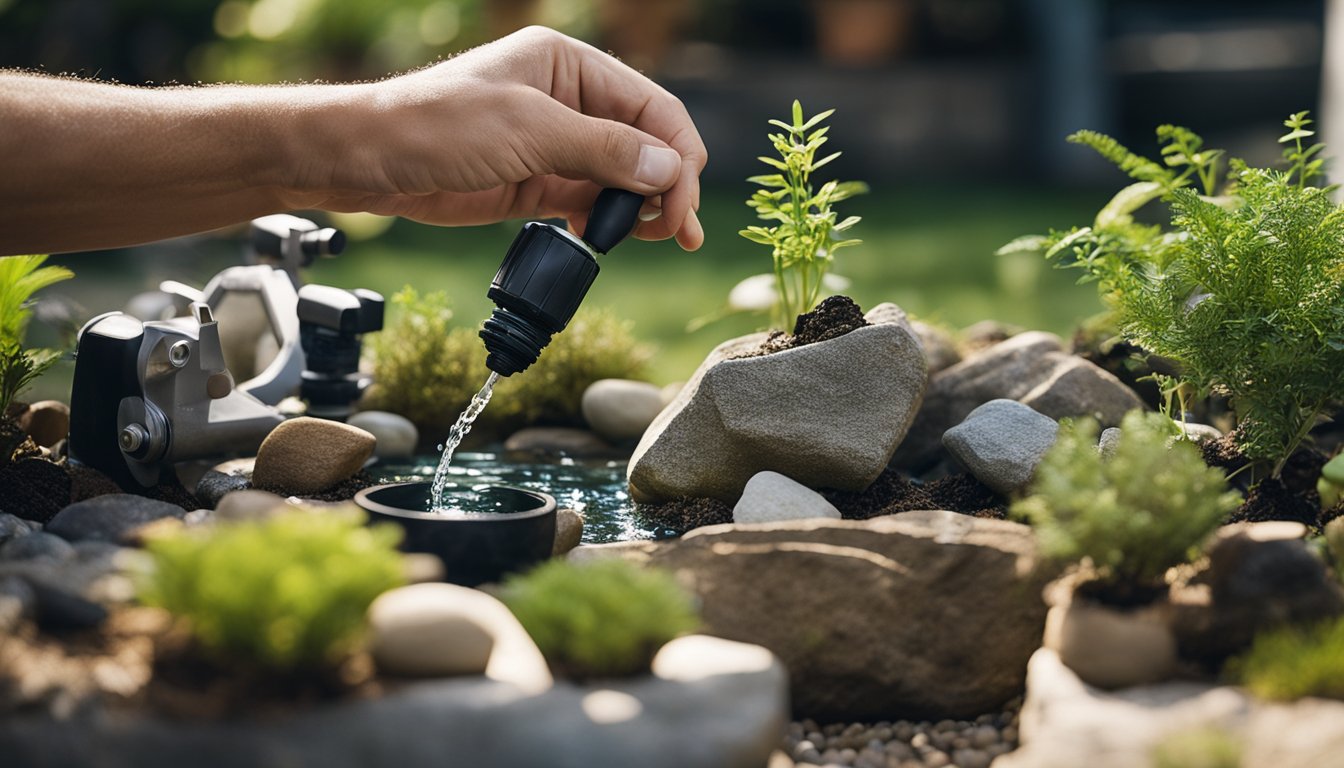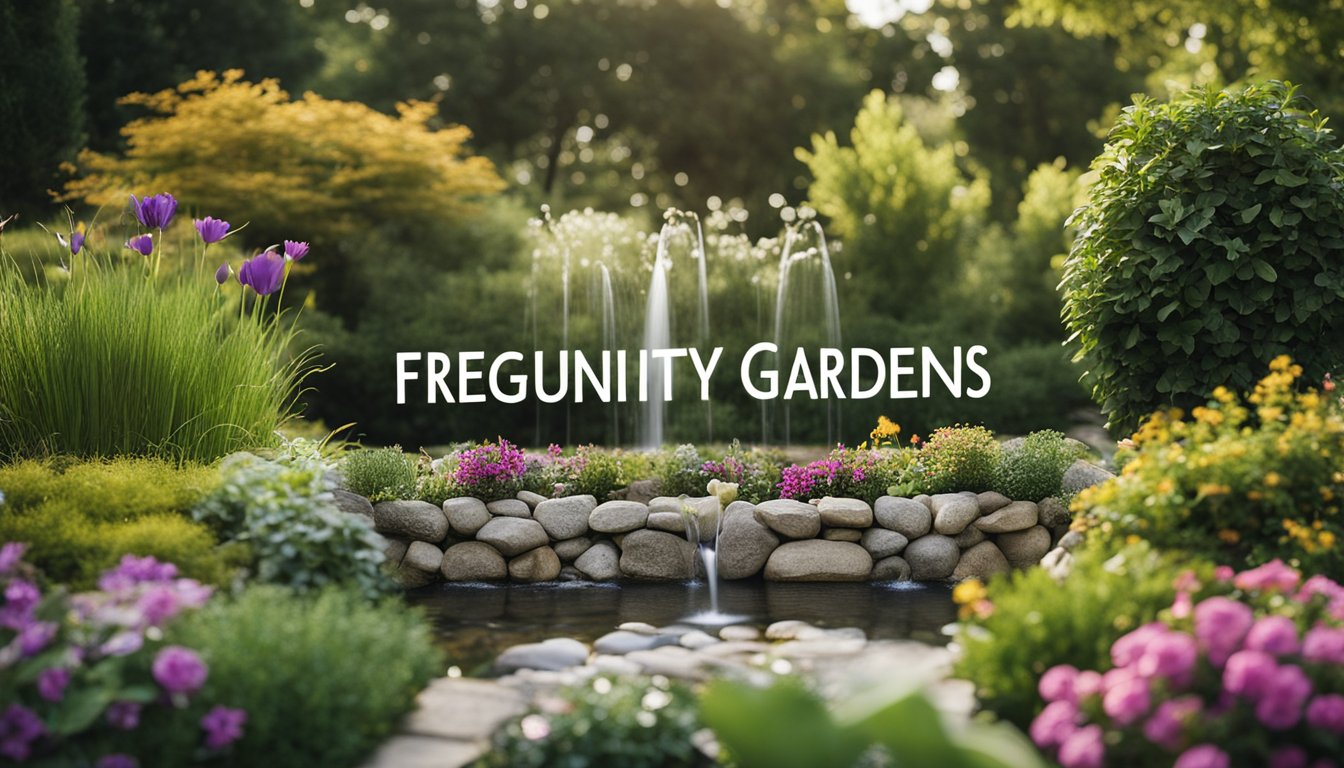Late updated: 22 Feb 2025 15:02
Written by: James Whitaker
Garden Water Feature DIY Projects For Beginners: Easy Ideas to Transform Your Outdoor Space
Transforming your garden into a tranquil retreat with a beautiful water feature is not only achievable but incredibly satisfying. Whether you’re contemplating a small fountain or a serene pond, these DIY water feature projects empower beginners to add a touch of elegance and calm to their outdoor spaces. A well-executed project enhances not just the garden’s aesthetic but creates a soothing ambience that enriches the entire surroundings.

Our garden water feature DIY projects guide you through the process, ensuring even the most novice gardeners can build something delightful. We explore different types and styles, giving insights into planning, design, and equipment to make installation straightforward. With the right approach, you can create a garden oasis that becomes the focal point of your outdoor area.
An informed approach paired with basic DIY skills can yield impressive results. As we delve into frequently asked questions, practical tips, and common pitfalls, we ensure a comprehensive understanding of each step of the process. Join us in this journey and transform your garden into a paradise that you'll cherish.
Key Takeaways
- Beginners can create elegant garden water features.
- Strategic planning and design are crucial.
- Clear steps make construction and installation feasible.
Planning and Design
A well-thought-out garden water feature begins with careful planning. By focusing on the location, design, components, and understanding water dynamics, we ensure a harmonious blend with the landscape and a properly functioning feature.
Choosing the Right Location
Selecting the perfect spot for a water feature involves considering several factors. Visibility is key; we want our water feature to be a focal point in our garden, so placing it where it can be easily viewed from our favourite sitting areas or pathways is ideal.
Sunlight exposure influences algae growth. Too much sunlight can lead to excessive algae, so aim for a balance. Consider nearby plants and their growth patterns, ensuring they do not obstruct views or fall into the water. Accessibility is crucial for maintenance, allowing us to manage the feature without hassle.
Selecting a Design and Components
Our design choice should reflect the overall aesthetic of the garden, whether modern, rustic, or traditional. The design not only involves the visual aspects but also functional components. Material selection impacts durability—stone, ceramic, and metal are popular choices.
Choosing suitable pumps and tubing is critical for water circulation. These must be appropriate for the size of the feature. Decorative elements such as rocks, lighting, and plants can enhance the design but must be selected with care to complement the feature rather than overcrowd or complicate the space.
Understanding Water Flow and Filtration
Grasping water dynamics ensures that our feature functions smoothly. Correct water flow prevents stagnation, which can lead to unpleasant odours and unhealthy water. Pumps must be strong enough to circulate water throughout the feature, maintaining consistent flow.
A reliable filtration system is essential to clean the water and prevent debris build-up. This involves selecting filters that match the pump capacity, ensuring effective filtration. Regular maintenance of these systems will reduce algae and keep the water clear. Understanding these elements allows us to create a visually pleasing and low-maintenance water feature.
Construction and Installation

Creating a garden water feature involves several essential steps, from gathering the right materials to installing pumps and introducing aquatic plants. This process requires careful planning and precision to ensure a harmonious addition to your garden that remains functional and attractive over time.
Gathering Materials and Tools
We start with gathering necessary materials and tools. For a basic DIY water feature, you'll need a pond liner, durable waterproof sealant, and a water pump to ensure proper circulation. Materials such as flagstones, gravel, and sand often come in handy for both decorative and functional purposes.
It's crucial to compile a comprehensive list before shopping. Essential tools include a shovel, level, drill, and measuring tape. Sourcing these items ahead of time simplifies the construction process and minimises delays.
Building the Foundation
Building the foundation is the next vital step, setting the base for your feature. We need to dig a hole that matches the size and shape of our chosen pond liner. It's important to make sure the base is level before laying the liner to prevent uneven water levels.
Once the liner is in place, secure it with stones or soil. Apply a waterproof sealant around the edges to guard against leaks. This foundation will not only ensure the feature holds water effectively but also support aquatic life and plants.
Installing Pumps and Water Circulation Systems
Installing the pumps and water circulation systems is where technology blends with nature. Selecting the right pump is crucial; it should match the size of your feature for optimal performance. Generally, a small to medium-sized garden pond requires a pump that can circulate water adequately without being overpowered.
Position the pump carefully, connect it with the necessary tubing, and check for leaks. Regular maintenance, such as cleaning any build-up or debris, will keep the pump in peak condition and maintain water quality.
Adding Aquatic Plants and Wildlife Attraction
Finally, adding aquatic plants and wildlife transforms your pond into a living ecosystem. We select plants that thrive in water, such as water lilies or reeds, which provide oxygen and shelter. Carefully plant them in the pond according to their depth and sunlight needs.
To attract wildlife, consider adding small stepping stones or floating platforms. These provide a resting place for birds or small creatures visiting your garden oasis. Incorporating a variety of plants and features ensures a balanced and inviting environment for all garden inhabitants.
Frequently Asked Questions

Exploring garden water features involves understanding material choices, positioning, and energy options. Here, we address common queries regarding simple construction techniques, innovative ideas, and operating tips.
How can one construct a water fountain for a school project using simple materials?
For a school project, one can use basic materials such as plastic bottles, small pumps, and tubing. Start by cutting and shaping the bottles to create different levels for water flow. Secure the setup using strong adhesive, and connect the pump to ensure continuous circulation. This simple setup can demonstrate the mechanics of a water feature effectively.
What are some inventive ideas for creating a homemade water feature?
Innovative water features can be crafted from everyday items. Consider using stackable pots to form a cascading fountain, or vintage teapots for a quirky touch. Recycled materials like tyres or wooden barrels can add unique character. Creativity and resourcefulness are key in repurposing items to enhance garden aesthetics.
Is it advisable to position a water fountain in direct sunlight or in a shaded area?
It's best to place a water fountain in a partially shaded area. While natural sunlight can enhance the visual appeal, too much direct exposure may lead to increased algae growth and water evaporation. Partial shade helps maintain water quality and prolong the lifespan of the materials involved.
Can one continuously operate an outdoor water fountain without causing any issues?
Yes, running a fountain continuously is possible with regular maintenance. Ensure the pump is submerged and free from debris. By cleaning filters and checking water levels regularly, you can prevent common issues such as pump burnout or clogging. Consistent oversight is essential for seamless operation.
What techniques are available for creating a garden fountain that doesn't require electricity?
We can use solar-powered pumps to operate a fountain without electricity. These pumps utilise sunlight, offering an eco-friendly alternative. Additionally, gravity-fed systems, which use elevation and water's natural movement, can be considered. Both options reduce reliance on electrical sources while maintaining functionality.
What considerations should be made when designing a small water feature for a limited outdoor space?
When designing for limited spaces, scale and proportion are crucial. Opt for compact designs such as wall-mounted features or desktop fountains. Consider the noise level and maintenance required. Efficient use of vertical space can add dimension without overwhelming the area, making strategic planning essential.
